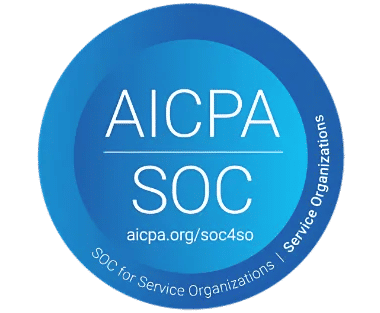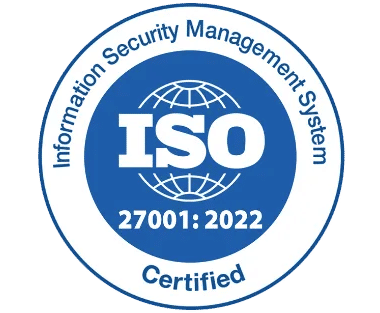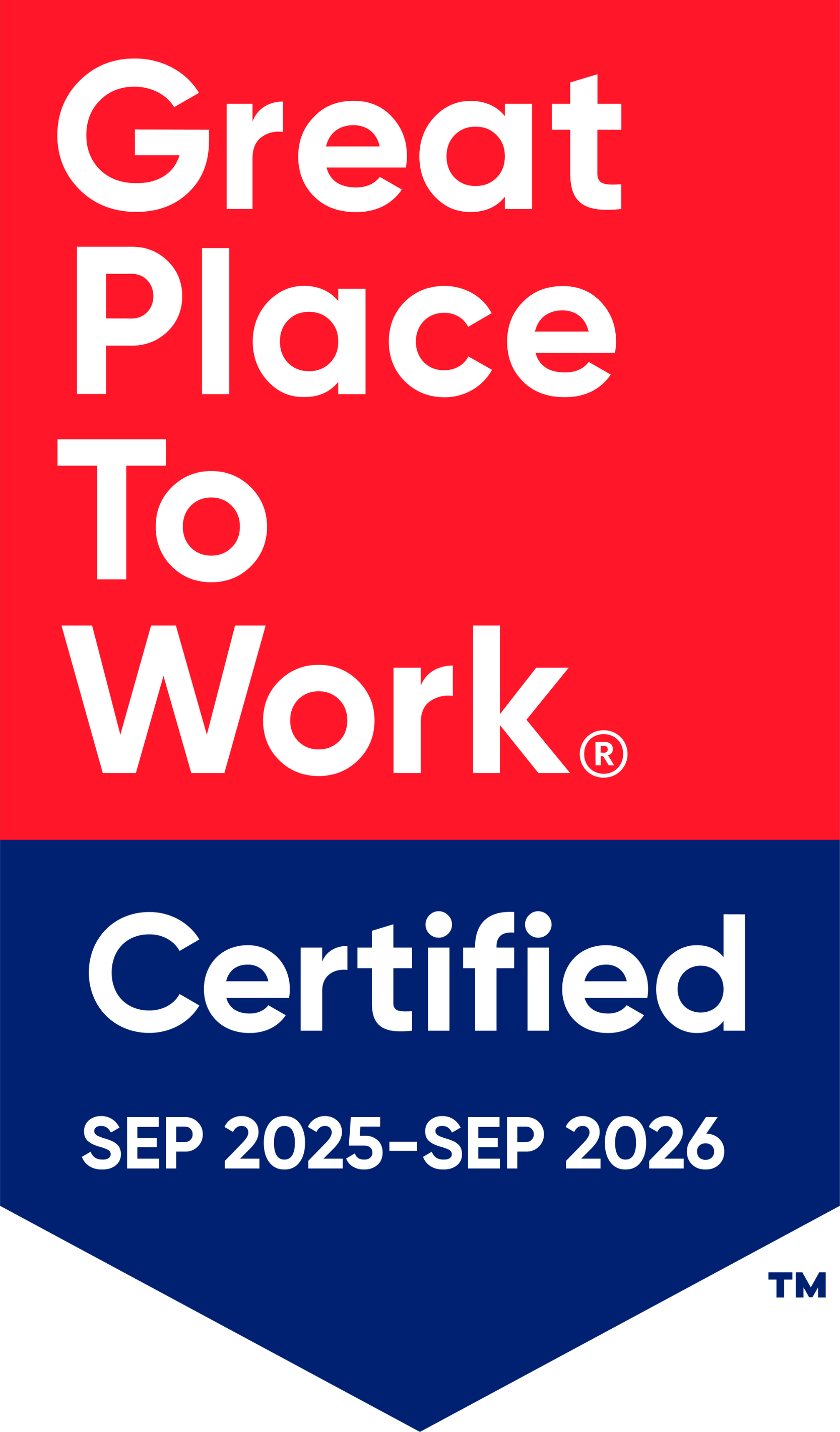Resource Management: Guide & Benefits for 2025
_8jQvve8y-.png)
With the right resource management strategy, you can prevent overallocation, eliminate bottlenecks, and keep your projects running smoothly. A well-optimized system not only improves efficiency but also enhances team collaboration and accountability. Whether you’re managing a small team or a large enterprise, mastering resource allocation is the key to long-term success.
By leveraging project management software, you gain real-time visibility into workloads, ensuring that no team member is overburdened or underutilized. It also helps in cost control, allowing you to track budgets, reduce unnecessary spending, and allocate funds where they’re needed most. Additionally, streamlined resource planning leads to faster project completion, reducing delays and improving overall business agility.
In today’s fast-paced work environment, having a structured approach to resource management isn’t just a luxury—it’s a necessity. When done right, it drives higher productivity, better decision-making, and sustainable growth. So, let’s explore how you can harness the full potential of project management tool and optimize every aspect of your workflow
What is Resource Management?
Resource management is the strategic process of optimizing and allocating business resources—such as personnel, finances, tools, and assets—to maximize efficiency and achieve desired outcomes. It ensures that every resource is used effectively, minimizing waste while enhancing productivity.
Successful resource management involves careful planning, monitoring, and supervision to ensure that capital, workforce, technology, and operational assets are utilized to their full potential. A well-structured approach helps businesses balance resource availability and capacity, preventing overallocation or underutilization.
One of the key aspects of resource management is resource forecasting, which allows organizations to plan, stay within budget, and distribute workloads efficiently. By leveraging resource planning techniques, businesses can improve decision-making, enhance project timelines, and ensure smoother operations across all departments.
Why is Resource Management Important?
Effective resource management is crucial because it ensures that every asset—whether it’s people, finances, or tools—is used efficiently to maximize output while minimizing costs. By strategically allocating resources, project managers can prevent waste, avoid bottlenecks, and maintain a smooth workflow.
Beyond just day-to-day operations, resource planning plays a vital role in long-term business success. It helps organizations anticipate future needs, ensuring that the right resources are available at the right time. This proactive approach prevents last-minute shortages and keeps projects on track.
Businesses also leverage project management software to adapt to unexpected changes, whether it’s shifting project priorities or sudden resource constraints. In essence, strong resource management not only enhances productivity but also strengthens risk management, enabling teams to navigate challenges with confidence and deliver projects on schedule.
The 10 Common Types of Resource Management
Resource management is a broad discipline that covers various aspects of business operations. Here are ten key types of resource management that organizations rely on:
1. Resource Allocation
Resource allocation is the strategic process of ensuring that the right resources are assigned to the right tasks at the right time. By prioritizing project requirements and distributing resources efficiently, organizations can control costs, enhance productivity, and improve project outcomes.
Effective resource allocation goes beyond just assigning tasks—it helps teams optimize staffing, leverage employee skill sets, and gain a competitive advantage. By aligning the right people with the right responsibilities, businesses can maximize efficiency while fostering a balanced and motivated workforce.
Failing to allocate resources properly can lead to overburdened employees, inefficiencies, and missed deadlines. Poor workload distribution may result in burnout, dissatisfaction, or even decreased team morale. A well-planned resource allocation strategy ensures that workloads remain balanced, employee potential is fully utilized, and projects stay on track
2. Resource Utilization
Resource utilization focuses on how effectively resources are used to achieve a specific goal. It provides visibility into when, where, and how resources are being utilized, ensuring that every asset—whether it’s time, talent, or tools—is allocated in the most efficient way possible.
By optimizing resource utilization, teams can avoid redundancies and prevent bottlenecks. It ensures that no two employees are working on the same task unnecessarily, reducing wasted effort and maximizing productivity.
For example, if you manage a content marketing team with tight deadlines, you wouldn’t assign copywriters to create in-depth whitepapers or expect long-form writers to craft short, conversion-focused email campaigns. Instead, you would align tasks with team members’ expertise, ensuring that each project is handled by the most qualified person.
Effective resource utilization not only enhances efficiency but also prevents skill mismatches, ensuring that every team member contributes their best work toward achieving business goals.
3. Resource Leveling
Resource leveling, also known as resource smoothing, is a strategic approach to balancing resource demand with availability. It ensures that work is distributed evenly, preventing teams from being overloaded or left idle due to inefficient scheduling.
By redistributing resources across projects, businesses can maintain steady productivity without overburdening employees or creating unnecessary downtime. This is especially valuable in industries like professional services, where workloads can fluctuate based on client needs.
For instance, some clients may require more attention or extended support, while others have flexible timelines. Resource leveling helps managers allocate work efficiently across the team, ensuring that resources are neither underutilized nor stretched too thin. By taking a proactive approach, organizations can maximize efficiency, meet project deadlines, and keep teams operating at their best 4. Resource Forecasting
Resource forecasting is the process of anticipating future resource needs by analyzing historical trends, market conditions, and project demands. It helps organizations proactively allocate resources, ensuring they have the right people, tools, and budget available when needed.
By leveraging predictive models and data-driven insights, businesses can prevent resource shortages, avoid last-minute scrambling, and maintain project efficiency. Effective forecasting ensures that projects remain within scope and budget, allowing teams to plan ahead without disruptions.
Examples of Resource Management
Resources in a business setting generally fall into two categories:
1️ Intangible Resources: Intellectual property, processes, expertise, and innovative ideas that drive business success.
2️ Tangible Resources: Physical and digital assets such as software, materials, office space, marketing tools, and human capital.
By mastering resource forecasting, organizations can stay ahead of challenges, optimize productivity, and make informed decisions for future growth.
Every team is responsible for managing a set of essential resources that ensure smooth operations and project success. These key resources typically include:
- Work Hours: Tracking and optimizing employee time to maximize productivity and meet deadlines.
- Skillsets: Leveraging team expertise to assign tasks effectively and enhance overall efficiency.
- Workforce: Ensuring the right number of personnel are available to handle workloads efficiently.
- Project Budgets: Allocating financial resources strategically to stay within cost limits and prevent overspending.
- Materials & Equipment: Managing physical assets and supplies required for seamless project execution.
To break it down further, here are the key resource categories and the specific assets you’ll likely manage within each:
- Human Resources: Employees, freelancers, interns, and volunteers who contribute their skills and expertise.
- External Resources: Suppliers, vendors, and strategic partners that support business operations.
- Communication Channels: Meetings, discussions, and collaboration tools that facilitate teamwork and decision-making.
- Physical Materials: Essential equipment, hardware, and technology needed for smooth project execution.
- Financial Assets: Budgets, funding sources, and expense management to ensure cost-effective operations.
- Intellectual Capital: Proprietary processes, innovative ideas, and accumulated business knowledge.
- Workspace & Facilities: Office spaces, coworking areas, and real estate used for daily operations.
- Time Management: Schedules, deadlines, and milestones that structure workflow and project timelines.
- Digital Tools & Software: Applications, platforms, and automation tools that enhance productivity and efficiency.
Building an Effective Resource Management Process
A well-structured resource management process ensures that your team makes the best use of available resources while minimizing waste. Proper preparation and strategic planning are key to optimizing efficiency and driving successful project outcomes.
In general, resource management can be streamlined into four essential phases, each designed to help organizations allocate, monitor, and optimize resources effectively. By following these steps, businesses can ensure that their teams stay on track, projects remain within scope, and resources are used to their fullest potential.
Step 1: Select a Flexible Resource Management Tool
To effectively manage resources, your team needs a robust and customizable resource management solution. The right software empowers resource managers to oversee projects seamlessly, streamline workflows, and maintain accuracy across multiple tasks.
Customization plays a crucial role in adapting resource management software to fit your organization’s unique needs. A flexible tool allows teams to allocate resources efficiently, optimize processes, and gain real-time insights into project performance.
Additionally, automation enhances resource management by simplifying complex tasks such as generating reports, tracking resource utilization, and analyzing live data. As projects grow in scope and urgency, automation ensures that data collection and decision-making remain precise, helping teams identify areas for improvement and keep projects on schedule.
Step 2: Assess and Identify Available Resources
Before allocating resources, it’s essential to take stock of everything at your disposal. This includes physical assets, human capital, financial resources, and even intangible assets like knowledge and data. A clear understanding of available resources lays the foundation for effective capacity planning.
Once resources are identified, the next step is evaluating their significance and utility. Not all resources hold equal value—some are critical for project success, while others play a supporting role. By assessing each resource’s availability, limitations, and impact, teams can prioritize effectively, prevent shortages, and ensure smooth project execution.
Step 3: Monitor and Track Resources for Future Projects
Automating resource management with Timesheet 365 helps project managers track budgets, plan efficiently, and meet deadlines. Here’s how you can optimize resource tracking:
- Create a Project: Set up a project in Timesheet 365 and assign it a clear name to centralize resource management.
- Define Available Resources: List all resources, including team members (engineers, designers, marketers), budgets, tools, and materials.
- Assign Tasks: Allocate tasks to the right individuals, ensuring efficient resource use and balanced workloads.
- Set and Track Budgets: Establish a budget for each resource and monitor spending in real time to prevent overspending.
- Monitor Resource Utilization: Use Timesheet 365 to track real-time resource usage, making it easy to adjust workloads as needed.
- Generate Reports: Access detailed reports and dashboards to analyze resource allocation, project progress, and budget performance.
Step 4: Predict and Plan for Future Resource Needs
- Forecasting is a crucial step in resource management that helps businesses anticipate future resource demands based on current trends and projected workloads. By analyzing past data and market conditions, teams can identify potential shortages or surpluses and proactively adjust resource allocation.
- Effective forecasting ensures that organizations stay prepared for upcoming projects, prevent resource bottlenecks, and optimize workforce planning. By leveraging predictive insights, businesses can make informed decisions, minimize risks, and maintain smooth project execution
The Best Resource Management Tools You Can Use
Timesheet 365 makes resource management seamless with its intuitive features and user-friendly interface. Its customizable dashboards give a clear overview of who is responsible for what task, ensuring efficient workload distribution.
With Timesheet 365, you can apply your newly learned resource management strategies to assign tasks to the right team members, set deadlines with confidence, and track project progress effortlessly.
Some of its powerful features include:
- Task Dependencies: Link tasks together to ensure smooth workflow execution.
- Priority Settings: Organize tasks based on urgency to meet deadlines effectively.
- Built-in Communication Tools: Keep all project discussions in one place, reducing the need for multiple platforms.
- Project Documentation & Storage: Easily store, share, and access project files.
- Real-Time Collaboration: Enable teams to work together seamlessly, improving efficiency and productivity.
Tailor Your Workflow with Customizable Whiteboards
Personalize Whiteboards by integrating documents, tasks, and key project elements in one place.
Adapt the tool to fit your resource management strategy instead of changing your workflow.
- Visualize Tasks and Streamline Resource Management
Use Gantt chart views to spot bottlenecks and adjust workflows proactively.
Fully customizable features let you structure resource management to suit your team’s needs.
- Essential Features of a Powerful Resource Management Tool
Project Views & Calendars – Visualize task progress in real-time with interactive timelines and calendars.
Task Assignments – Define responsibilities clearly to improve team alignment and workload distribution.
Custom Dashboards – Build personalized dashboards to monitor resource efficiency and project progress.
Comprehensive Reporting – Generate reports to analyze resource utilization, capacity planning, and productivity.
Automated Workflows – Save time with custom automations for task assignments and project updates.
- Pre-Built Templates for Seamless Resource Management
Access ready-to-use templates for resource allocation, project tracking, and capacity planning.
Implement best practices without starting from scratch for faster and more efficient project execution.
3 Customizable Resource Management Templates You Need to Try
Timesheet 365 offers powerful resource management templates that help project and resource managers streamline workflows and optimize resource allocation. Instead of starting from scratch, these templates save time by providing a structured framework to kick-start projects efficiently.
Designed to enhance team collaboration and improve productivity, these templates come equipped with essential features such as:
- Task dependencies to ensure smooth project execution.
- Priority settings for efficient task management.
- Built-in communication tools to keep teams aligned.
5. Workload Management
Workload management helps prevent employee burnout by evenly distributing work across teams. It ensures that no individual or team is overworked while others have idle time. Managers can use this feature to monitor workloads, track employee availability, and reassign tasks if needed. With Timesheet 365, workload monitoring tools allow managers to visualize workloads in real time and adjust assignments accordingly, ensuring consistent performance and productivity.
6. Capacity Planning
Capacity planning ensures that resources are used effectively by analyzing their availability and demand. It helps managers understand whether their team has the capacity to take on new projects or if they need to hire additional staff. Without capacity planning, organizations may overcommit or underutilize resources, leading to inefficiencies. Timesheet 365 provides detailed insights into current resource usage, upcoming workloads, and capacity forecasts, allowing businesses to plan projects with confidence
7. Time Tracking Integration
Time tracking integration allows teams to log work hours and measure productivity directly within the resource management system. By monitoring how much time employees spend on different tasks, managers gain insights into work efficiency, project progress, and potential time bottlenecks. This feature is particularly useful for accurate payroll processing, invoicing, and project billing, ensuring that teams stay within time constraints and budgets
8. Budget Control
Budget control ensures that financial resources are monitored and used efficiently throughout a project’s lifecycle. Without strict budget tracking, costs can spiral out of control, leading to financial losses. Timesheet 365 enables managers to set budgets, track expenses, and generate real-time financial reports, ensuring projects remain within their financial limits. It also helps teams adjust resource allocation when funds are running low, preventing overspending and improving profitability.
9. Custom Reporting
Custom reporting provides deep insights into project performance, resource efficiency, and financial management. Managers can generate reports that highlight key metrics, such as workload distribution, task completion rates, budget consumption, and time spent on projects. With real-time reporting tools, businesses can identify trends, make data-driven decisions, and continuously improve their resource management strategies.
10. Scalability & Adaptability
As businesses grow, their resource needs change. Scalability ensures that the resource management system can adapt to evolving project demands. Whether a company is expanding operations, adding new team members, or shifting priorities, Timesheet 365 provides the flexibility needed to scale up or down. Teams can easily adjust their resource plans, redistribute workloads, and allocate new budgets, ensuring that businesses remain agile and responsive to changing needs.
Conclusion
Effective resource management is essential for keeping projects on track, optimizing workloads, and ensuring efficient use of time and budgets. Timesheet 365 simplifies this process by providing powerful tools for resource forecasting, allocation, tracking, and reporting—all in one platform. With its automation, real-time insights, and scalability, businesses can streamline operations, prevent burnout, and stay within budget, making resource management more efficient and hassle-free
Frequently Asked Questions
What do you mean by resource management?
Resource management is the strategic process of planning, allocating, and optimizing resources such as manpower, finances, tools, and time to ensure efficient project execution. It helps organizations maximize productivity, control costs, and prevent resource shortages or overloads. Effective resource management ensures that the right resources are available at the right time, contributing to successful project delivery and business growth.
What is an example of resource management?
A common example of resource management is assigning employees to different tasks based on their expertise and availability. For instance, in a marketing agency, project managers allocate graphic designers for branding projects, writers for content creation, and SEO specialists for website optimization. This ensures that work is evenly distributed, deadlines are met, and no team member is overworked or underutilized.
What are the 3 types of resources in resource management?
Resource management typically involves three main types of resources:
- Human Resources – Employees, contractors, freelancers, and teams responsible for executing tasks.
- Material Resources – Equipment, software, office space, raw materials, and technology required for project completion.
- Financial Resources – Budgets, funding, and financial investments needed to support projects and operations.
Properly managing these resources ensures projects are executed efficiently and cost-effectively.
What are the 5 M's of resource management?
The 5 Ms of resource management represent the core elements required for successful project execution:
- Manpower – Skilled professionals responsible for carrying out project tasks.
- Materials – Physical and digital resources needed to complete a project.
- Machinery – Tools, equipment, and technology that support operations.
- Methods – Processes, workflows, and strategies used for execution.
- Money – Financial resources required for project planning and implementation.









_svxLrd-8yH.png)

_2VYSFUTN5m.png)

_JiluXJRGNl.svg)

_2djTKNocf.png)





_Rapo0hRMBy.png)

















